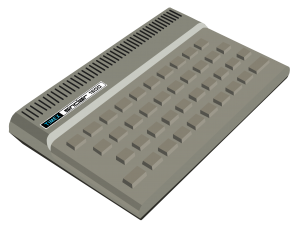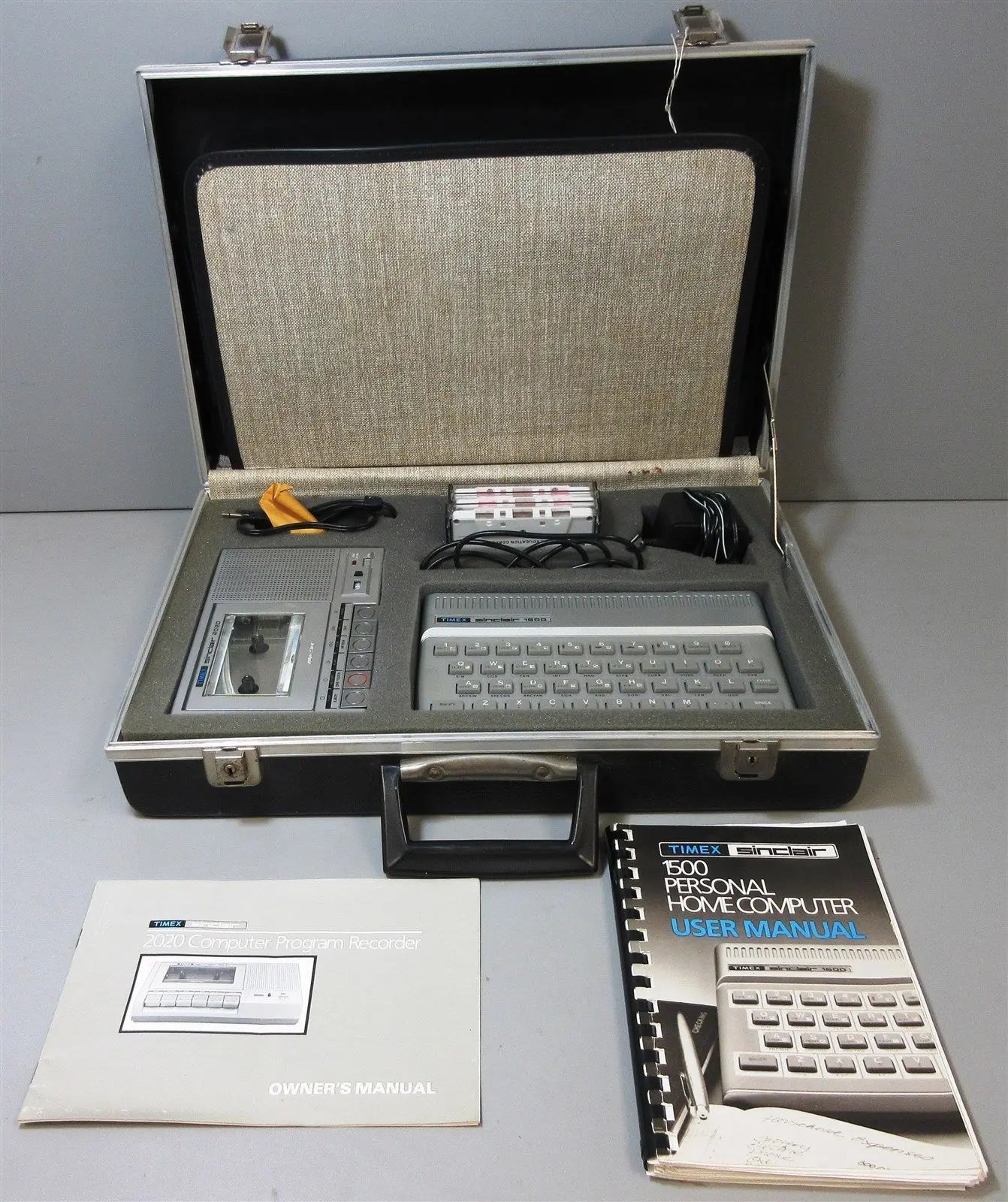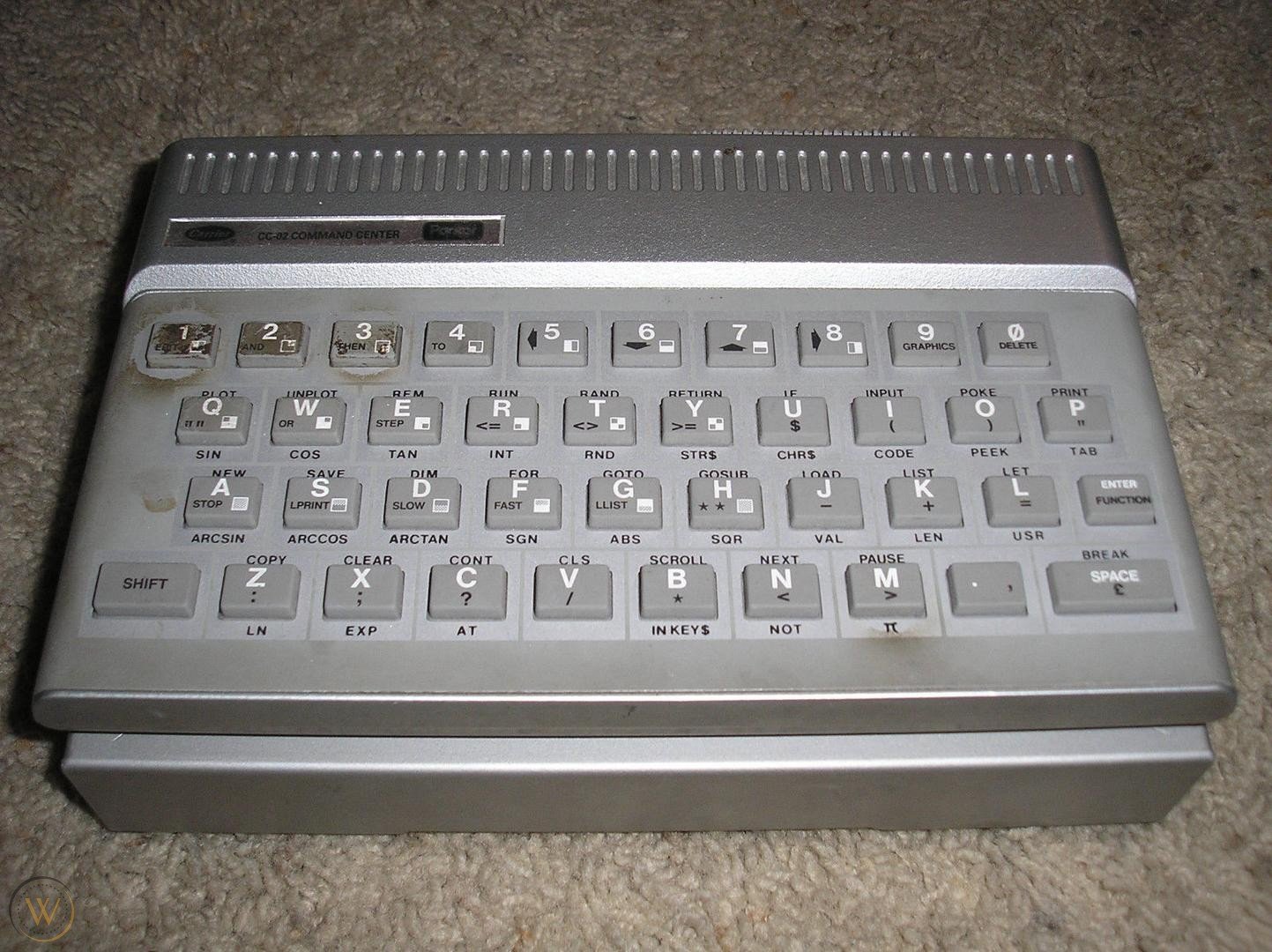
The Timex Sinclair 1500 was a product intended expand on the base established by the Timex Sinclair 1000 and continue to serve the same audiences, largely around computer literacy and education. It also corrected several issues with the 1000, most notably the keyboard, RAM pack wobble and tape load/save reliability.
Announced May 17, 1983, it was a redesigned TS1000 with 16K RAM built in using the case and keyboard of the Sinclair ZX Spectrum.
Timex expected to launch the computer in July but manufacturing delays pushed the actual launch back to September.
The TS1500 was manufactured at the Timex plant in Portugal.
The initial retail price was $79.99. Timex lowered the retail price of the 1000 to $49.95.
Timex introduced a cartridge accessory (the 1510) and a few cartridges to help the TS1500 compete against video game systems and other computers with cartridge systems. The cartridge instant load feature introduced a bug in the 1500.
Cartridge-based software was expected to sell for between $13 and $30, depending on the complexity of the program.
Hardware Changes
The TS1000 circuit board was redesigned to fit the ZX Spectrum case and keyboard connectors. At the same time, the Ferranti ULA present in the ZX81 and TS1000 was replaced with a 68-pin custom logic chip, produced by NCR, that required less power, improved the display quality and reduced spurious RFI emissions. That reduced the overall heat output when compared to the ZX81/TS1000.
Other changes included:
- ROM properly decoded to the lowest 8K, eliminating the “ghost” images
- Expandable to 32K RAM with some 16K RAM packs
- Key-selectable TV channel
The Sinclair Timex User Group of the Boston Computer Society reported in its newsletter that Timex claimed the 1500 would have “8-bit bank switching to give 64 megabytes of addressability.” This claim is not supported by internal documentation about the computer.
A few POKEs are required for the system to recognize additional RAM. Not all RAM modules would work with the 1500. The rearranged power and cassette connectors prevented longer units like Memotech’s from properly connecting to the computer.
Even with an extender card, a number of RAM packs would not work because Timex changed a signal on the edge connector.
While Timex fixed some of the bugs in the 1000 ROM, it introduced some new ones:
- LOAD failures jumped to the middle of an instruction in the initialization at 03e5h, corrupting memory and/or crashing.
- The cartridge check routine assumed no RAM at 2000h and could crash if there was a 1 at that memory location.
- A very long program (approx 16K) would push the display file to 32767 and the computer would think it was out of memory, even if a RAM pack was installed.
Reception
Timex announced the 1500 a few weeks before the Summer Computer and Electronics Show, where they showed a prototype of the 2068. Prices for the TI 99/4A and VIC-20 had dropped to under $100 at that point.
Timex had full faith in their new computer. “We believe the many advanced features of the T/S 1500 will generate enthusiastic consumer and retailer response, as they did our Timex Sinclair 1000,” said Daniel Ross, Vice President of Timex Computer Corporation.
The press and existing enthusiasts were puzzled by the 1500. Timex Sinclair User, in their preview of the 2068, had a sidebar titled “Who Needs the Timex Sinclair 1500?” The answers, which “took weeks to figure out,” were weak at best.
Softsync were not optimistic about the T/S 1500, since it did not have color graphics. “Six months ago, it would have been great. Now, the moment has passed. I’m not putting any hopes on it at all,” said Ken Coach, marketing and sales director of Softsync.
Wayne Green, publisher of several computing magazines, reported a “rising chorus of frustrated Timex users who are telling friends not to waste their money” on Timex computers.

Uses of the 1500
The 1500 featured in two unique products from other vendors.
National Education Corporation
The 1500 was central to the National Education Corporation’s Technical Literacy Series. They sold the 1500 with the 2020 cassette recorder, 11 tutorial booklets and a briefcase to eager learners. The kit sold for $295.

Parker Electronics
Parker Electronics adapted the 1500 to be the user interface to a Carrier Corporation HVAC controller.

T/S 1500 Video Series
In 2023, Joao Diogo Ramos and David Anderson sat down, over the internet, and recorded a series of videos exploring the Timex/Sinclair 1500 through documentation preserved by the LOAD ZX Spectrum museum. The seven part series is an eye-opening view into the development process and Timex’s internal politics.